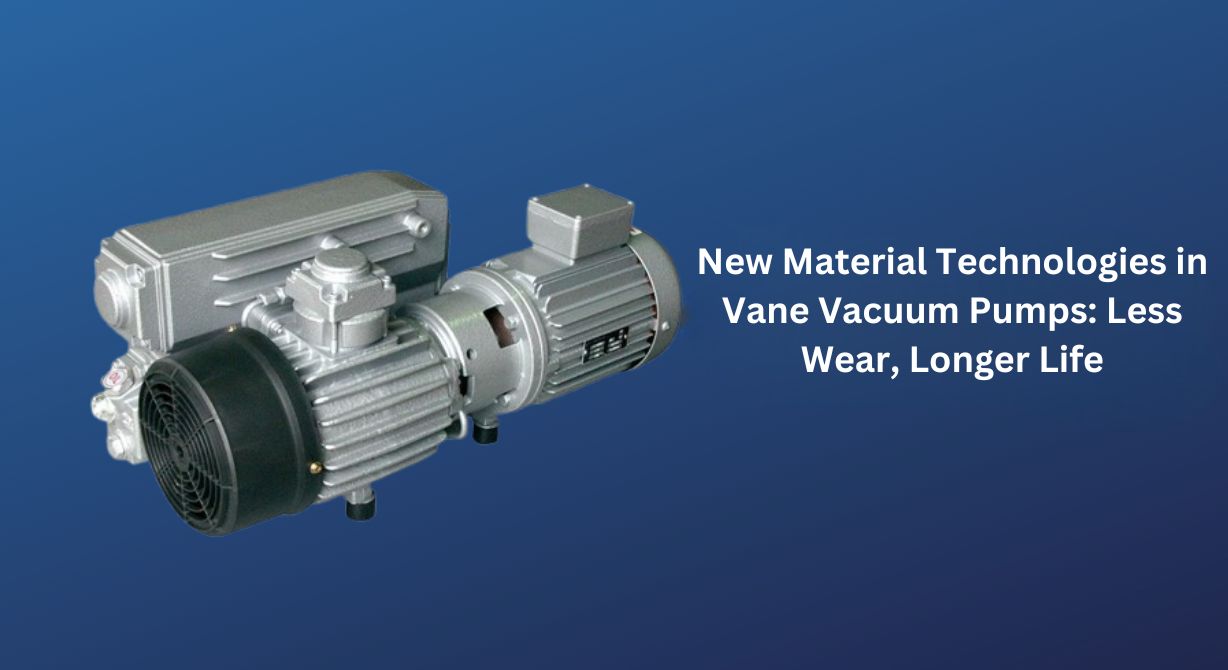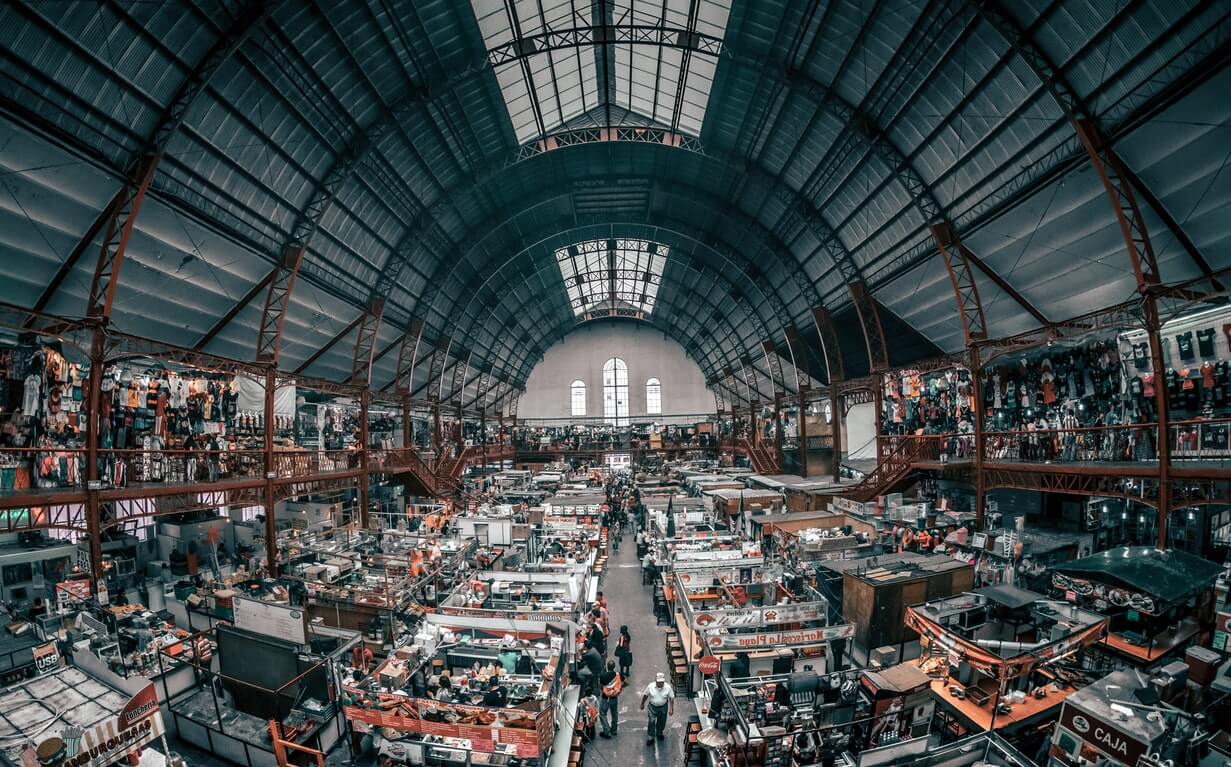New Material Technologies in Vane Vacuum Pumps: Less Wear, Longer Life
Table of Contents
- What Are the Latest Wear-Resistant Materials Extending Vane Pump Service Life?
- A Guide to Advanced Composite Vanes: Reducing Friction and Downtime in Vacuum Systems
- New Material Technologies That Are Revolutionizing Vane Vacuum Pump Durability
- Ceramic vs. Carbon Composite Vanes: A Technical Comparison for Industrial Applications
- How Do Self-Lubricating Materials in Vane Pumps Minimize Maintenance Intervals?
- The Impact of Nano-Coatings on Vane Wear: Engineering a Longer-Lasting Vacuum Pump
What Are the Latest Wear-Resistant Materials Extending Vane Pump Service Life?
The operational lifespan of a vane pump is fundamentally determined by the wear resistance of its critical components, primarily the vanes and the cam ring. In demanding applications involving high pressure, contaminated fluids, or poor lubrication, traditional materials like standard carbon-graphite or cast iron can degrade rapidly, leading to a loss of volumetric efficiency and premature failure. The latest material science advancements are directly addressing these failure modes by introducing composites and engineered surfaces that significantly extend service intervals.
Polyetheretherketone (PEEK)-based composites represent a major leap forward in vane material technology. When filled with specialized additives like carbon fibers, graphite, or PTFE, these polymers offer an exceptional balance of high strength, low friction, and chemical inertness. This combination minimizes vane tipping and reduces internal leakage, allowing pumps from Gücüm Pompa to maintain performance in harsh conditions where traditional vanes would quickly wear.
Beyond the vanes themselves, the housing or cam ring is a critical wear surface. Advanced surface engineering techniques, such as thermal spraying with carbide-based coatings, create an extremely hard, durable layer on the ring's interior. This hardened surface drastically reduces abrasive wear caused by particulate contamination in the hydraulic fluid. For Gücüm Pompa units, this translates to superior reliability in mobile equipment and industrial machinery operating in dirty environments, directly impacting total cost of ownership by reducing unplanned downtime and component replacement frequency.
The synergy between advanced vane composites and hardened cam rings is crucial for handling modern bio-degradable or fire-resistant hydraulic fluids, which often have lower lubricity than mineral oils. These new material combinations ensure stable film strength is maintained at the vane-to-ring interface, preventing metal-to-metal contact and the associated adhesive wear. This material compatibility is a key design focus for Gücüm Pompa, ensuring pump longevity across a diverse range of fluid specifications.
For commercial decision-makers, the investment in pumps utilizing these advanced materials is justified by a significant extension of the mean time between failures (MTBF). This enhanced durability not only lowers maintenance costs but also increases system uptime and productivity. The selection of a wear-resistant material is no longer just a technical specification but a strategic decision that impacts operational efficiency and profitability in competitive industrial markets.
A Guide to Advanced Composite Vanes: Reducing Friction and Downtime in Vacuum Systems
In the demanding environments of industrial vacuum systems, the selection of vane material is a critical determinant of operational efficiency and longevity. Traditional options often succumb to the relentless forces of friction and wear, leading to frequent maintenance cycles and unplanned downtime. This guide explores the engineering principles behind advanced composite vanes, which represent a significant leap in vacuum pump technology.
The core advantage of these advanced composites lies in their tailored material science. By integrating high-strength polymers and specialized lubricants, Gücüm Pompa has developed vanes with an exceptionally low coefficient of friction. This intrinsic property directly reduces heat generation and mechanical stress within the pump chamber, enhancing both performance and service life.
Superior abrasion resistance is another hallmark of these components. In applications involving particulate-laden atmospheres or aggressive condensates, composite vanes maintain their geometric integrity far longer than conventional materials. This resilience directly translates to more consistent vacuum performance and a reduction in vane replacement frequency, a major contributor to total cost of ownership.
From a commercial perspective, the extended operational lifespan of these vanes offers a compelling return on investment. Minimizing downtime for maintenance not only saves on labor and parts but also prevents costly interruptions to production lines or sensitive processes. The reliability afforded by Gücüm Pompa's composite vanes ensures continuous operation under strenuous conditions.
Implementing advanced composite vanes is a strategic upgrade for rotary vane pumps across sectors like packaging, chemical processing, and woodworking. The guide from Gücüm Pompa provides essential technical data on compatibility, installation protocols, and expected performance gains, empowering engineers and managers to make informed decisions that optimize their vacuum systems for maximum uptime and efficiency.
New Material Technologies That Are Revolutionizing Vane Vacuum Pump Durability
The relentless pursuit of enhanced durability in industrial vacuum systems has led to a paradigm shift, moving beyond traditional steel and cast iron components. New material technologies are fundamentally redefining the performance envelope of vane vacuum pumps, directly addressing long-standing challenges such as wear, corrosion, and thermal degradation. These advancements are critical for applications demanding continuous operation under harsh conditions.
Central to this revolution are advanced composite materials engineered specifically for vanes. Unlike conventional options, these composites offer an exceptional combination of low coefficient of friction and high inherent strength. This synergy minimizes abrasive wear against the pump stator, significantly extending service intervals and reducing maintenance downtime. The result is a substantial improvement in mean time between failures (MTBF), a key metric for operational efficiency.
Furthermore, the integration of specialized surface coatings on critical internal components provides an additional layer of protection. Technologies such as diamond-like carbon (DLC) coatings drastically enhance corrosion resistance, making pumps from Gücüm Pompa exceptionally suitable for chemical processing or environments with aggressive vapors. These coatings also mitigate the risk of vane sticking, a common failure mode that disrupts stable vacuum pressure.
The operational benefits extend directly to energy consumption and process stability. Pumps equipped with these new materials exhibit lower operating temperatures due to reduced internal friction. This thermal management not only conserves energy but also protects lubricants from premature breakdown, further enhancing reliability. For product managers, this translates into a lower total cost of ownership and predictable operational expenditure.
Gücüm Pompa leverages these material science breakthroughs to deliver robust solutions for demanding sectors like pharmaceuticals, food packaging, and semiconductor manufacturing. By focusing on the core material composition of wear parts, the engineering team has created pumps that offer unparalleled longevity and consistent performance under extreme service conditions, providing a clear competitive advantage in the industrial marketplace.

Ceramic vs. Carbon Composite Vanes: A Technical Comparison for Industrial Applications
In the demanding world of industrial fluid handling, the selection of vane material is a critical determinant of pump performance, longevity, and total cost of ownership. The debate between ceramic vanes and carbon composite vanes centers on balancing exceptional wear resistance against superior dry-run capability and tribological properties.
Ceramic vanes, typically manufactured from advanced alumina or silicon nitride, offer unparalleled hardness and resistance to abrasive particles. This makes them the preferred choice in applications involving significant abrasive wear, such as pumping slurries, sand-laden water, or coolants with grinding particulates. Their extreme dimensional stability ensures consistent clearance within the pump housing, maintaining efficiency over extended operational periods. However, their inherent brittleness can be a liability under shock loads or in situations with potential for cavitation.
Conversely, carbon composite vanes excel in environments where lubrication is intermittent or non-existent. Their self-lubricating nature provides a critical safety margin during accidental dry-run conditions, a common failure mode in many industrial systems. The material's inherent resilience allows it to absorb minor impacts and vibrations without fracturing, contributing to quieter operation and reduced stress on other pump components. This operational resilience is vital in applications like fuel transfer or compressed air systems.
The choice fundamentally impacts the pump's service life and maintenance schedule. For Gücüm Pompa units deployed in mining or wastewater treatment, ceramic vanes can dramatically extend intervals between rebuilds. In commercial applications like HVAC vacuum pumps or pneumatic conveyors, where dry-start is a risk, carbon composite vanes offer greater reliability and protection against catastrophic failure. The coefficient of friction of carbon composite also contributes to lower starting torque and improved energy efficiency in well-lubricated, high-speed applications.
The selection is not about a superior material but the correct material for the specific operating parameters. A thorough analysis of the fluid's abrasiveness, the presence of chemicals, operating temperatures, and the potential for dry operation is essential. Gücüm Pompa engineers leverage this technical understanding to specify the optimal vane material, ensuring that each pump delivers maximum reliability and value in its intended industrial context.
How Do Self-Lubricating Materials in Vane Pumps Minimize Maintenance Intervals?
The operational reliability of hydraulic systems is fundamentally linked to the performance of their core components, with vane pumps playing a critical role in numerous industrial applications. A primary factor influencing pump longevity is the internal lubrication of the vanes against the cam ring. Traditional designs rely on the hydraulic fluid itself for this purpose, which can be insufficient under demanding conditions, leading directly to increased wear and frequent maintenance intervals. The adoption of self-lubricating materials represents a significant engineering advancement that directly addresses this vulnerability.
These advanced materials, often composite polymers infused with solid lubricants like PTFE or graphite, create a low-friction interface between the vane tip and the cam ring. This tribological system functions independently of the fluid's lubricating properties, providing consistent protection even during dry start-ups or if fluid viscosity drops. The result is a dramatic reduction in component wear, particularly abrasive wear on the cam ring and vane tips, which are common failure points. This inherent durability is a key contributor to achieving a longer service life for the entire pump assembly.
For industrial engineers and plant managers, the commercial benefits are substantial. By minimizing the primary wear mechanism, pumps from manufacturers like Gücüm Pompa that utilize these materials can operate for extended periods without requiring disassembly for part replacement. This directly translates to reduced downtime reduction and lower lifetime ownership costs through decreased spare parts inventory and labor hours. The enhanced reliability also allows for more predictable predictive maintenance scheduling, moving away from reactive repairs.
The application of self-lubricating vane materials is particularly advantageous in harsh operating environments. Systems prone to fluid contamination from ingress of water or particulate matter benefit greatly, as the vanes are less susceptible to the accelerated wear caused by abrasive particles. Furthermore, this technology enables greater operational efficiency by maintaining consistent volumetric performance over time, as vane seal degradation is slowed. The strategic integration of these materials by Gücüm Pompa ensures that their vane pumps deliver not only superior performance but also a demonstrably lower total cost of operation for critical industrial machinery.
The Impact of Nano-Coatings on Vane Wear: Engineering a Longer-Lasting Vacuum Pump
The relentless friction and abrasion experienced by vacuum pump vanes are primary drivers of performance degradation and operational expense in industrial systems. The continuous sliding contact within the stator chamber leads to inevitable vane wear, resulting in diminished vacuum levels, increased energy consumption, and costly unplanned downtime for maintenance. Addressing this fundamental challenge requires a paradigm shift from traditional material science to advanced surface engineering.
Gücüm Pompa has pioneered the application of specialized nano-coatings to engineer a new generation of longer-lasting vacuum pumps. These coatings are not merely superficial layers; they are meticulously engineered at the molecular level to create an extremely hard, low-friction surface on the vane. This advanced surface engineering dramatically alters the interaction between the vane and the pump housing, fundamentally reducing the coefficient of friction.
The operational benefits of this technological advancement are substantial and directly impact the total cost of ownership. By significantly mitigating wear, pumps from Gücüm Pompa achieve a remarkably extended service life, reducing the frequency of vane replacements and associated labor costs. This enhanced durability translates into superior operational efficiency, as the pump maintains its designed vacuum performance over a longer period, leading to consistent process quality and lower energy expenditure.
In demanding industrial applications such as chemical processing, packaging, and semiconductor manufacturing, where pumps are exposed to aggressive conditions, the value proposition is even greater. The nano-coating provides exceptional resistance to corrosion resistance, protecting the vanes from acidic or caustic condensates that would rapidly degrade uncoated components. This robustness ensures reliable operation in harsh environments, minimizing the risk of process contamination and production halts.
The implementation of nano-coated vanes represents a critical step-change in pump reliability. For product managers and plant engineers, this technology offers a predictable maintenance schedule and a lower total cost of ownership. The extended component life and sustained performance metrics provided by Gücüm Pompa's approach deliver a clear commercial advantage, ensuring continuous production and protecting valuable downstream processes from the detrimental effects of vacuum failure.

